- The Noted Breweries of Great Britain and Ireland - This book, which includes descriptions of the cask factories at important breweries, may be downloaded as an e-book for free.
- The Wagon Business
- Collectors Weekly: Tools and Hardware
- The Free Dictionary: Wagon Jack
- Wheels that Won the West: Idaho Freight Wagons - information on skid shoes
- The Farm Wagon: The Anatomy of the Brake System - information on skid shoes
|
People are interested in old tools for a variety of reasons. Some like to collect tools. Some like to restore tools. Some like to buy and sell tools. Some like to use old tools to make things. I am interested in the history of tools, how they developed and how they were used when they were new. Most people interested in old tools are motivated by more than one of those reasons, but I am focused mainly on learning more about the history and use of tools. As I have grown older, I have come to realize how sophisticated pre-industrial technology could be. I first began to see that sophistication in the construction and operation of sailing ships. (The appreciation came in part from reading sea novels. I may also have been influenced by the fact that my grandfather was a ship's carpenter when he was a young man.) More recently. as I began researching tools in the Tison Tool Barn, I also came to appreciate the sophistication of coopering (making casks), and building wheels. I recently finished reading The Oregon Trail by Rinker Buck. The book is a memoir of the author's journey in 2011 by mule-drawn covered wagon from Missouri to Oregon. I started the book because I wanted to learn more about the Oregon Trail. It is not a history book, although Buck includes various tidbits about the history of the trail. I am mentioning the book in this blog because Buck also includes some details about the history and construction of wagons. Buck's book has now added wagon-building to my list of pre-industrial technologies.. In the 19th century many of the traditional crafts or technologies were industrialized. Production moved into factories, with power machinery, specialization of tasks, interchangeable parts and, in at least some cases, assembly lines. Ship building was resistant to such changes, but the manufacture of goods such as barrels and other casks, wagons, wheels and hand tools, became largely industrialized in North America and parts of Europe. I find it somewhat ironic that hand tools became cheap, standardized, and widely available at a time when so many traditional crafts were industrialized. I started on this musing about the transition of the production of many products from craft to industry from reading about wagons. The Tison Tool Barn has few items related specifically to wagons. It does have a couple of wagon jacks, donated early this year by Robert Sherman. Wagon jacks, as would be expected from the name, were used to raise a wagon axle enough to remove a wheel, either to replace a broken wheel or to grease the axle. Two types of wagon jacks in the Tison Tool Barn. Photos by Donald Albury. The Tison Tool Barn also has a wheel skid shoe, donated by Robert Sherman, which was used for helping to brake a wagon. Motor vehicles normally have brake systems that will stop and hold them on a down slope. In addition, the engine, if it is engaged through the transmission to the wheels, will help brake the vehicle. Animal-powered vehicles do not have those advantages. The brakes on wagons did not apply enough friction to stop the wagon, except on the most moderate of slopes. Moreover, if the draft animals pulling a wagon feel the wagon pushing against them, they will often panic and try to get out of the way by running away. Wagons therefore had to be restrained when going down hill. In extreme cases, a rope was tied to the rear axle and run around an anchor point at the top of the hill, so that the wagon's descent could be controlled by slowly paying out the rope. Another solution to restraining a wagon was to prevent the rear wheels from turning, creating friction between the wheel tires and the road. One method for achieving this was using skid shoes. A skid shoe was placed under a rear wheel , and held in place by a chain attached to the under side of the wagon bed. This placed the underside of the skid in contact with the ground. Sources:
1 Comment
In this post I will look at a type of folding ruler commonly known as zig-zag rulers, and an interlocking or slide ruler. Zig-zag rulers are folding rulers made up of a number of short pieces with locking hinges connecting the pieces. When fully opened, a zig-zag ruler is often six or eight feet long, and is stiff enough to be held in one hand while being used to measure. These are the tools that I have always thought of as "carpenter's folding rules." I bought one when I started my (one and only) summer construction job in 1962, and I have one in my garage today. The first zig-zag folding ruler from the Tison Tool Barn collection is this Lufkin Red End rule with a slide extension. The rule is 96 inches long when fully extended. The model number on this tool is badly smeared and unreadable, but a Lufkin Wood Rule Red End with Slide Rule Extension, Model No. X48, is still on the market. The next folding rule is this Lufkin Model 1206 aluminum rule with brass hinges. Offerings for sale of examples of this rule on the Internet attribute it to the period from the 1920s through the 1950s. This ruler is 7 inches long folded, and 72 inches long fully extended. The third zig-zag ruler in the Tison Tool Barn is this 24-inch long steel ruler. The only marking on it is the legend "MADE IN GERMANY." It has a leatherette case. The final ruler from the Tison Tool Barn covered in this post is not really a folding ruler, but it is closely related, and is used like a zig-zag ruler. It is an Interlox Master Slide Rule, Model No. 106. Instead of legs swinging on hinges, each segment slides over the next segment, with clips on the edges keeping the segments rigidly in line. (The hinges on zig-zag rulers may loosen with use, allowing unwanted bends in an extended ruler.) It was advertised as ideal for measuring inside dimensions. This example of the Interlox ruler is 72 inches long fully extended. Rulers could be ordered from the manufacturer in one-foot increments of length. This ruler was advertised in a 1915 edition of Popular Mechanics magazine, and remained in production at least until World War II. There are a number of plain old rulers and yardsticks in the Tison Tool Barn, but I'll get around to them some other time.
|
AuthorI have been a volunteer at the Matheson History Museum. Feeling an affinity with old hand tools (some of which I remember from my youth), I have tried to learn more about the history of the tools in the Tison Tool Barn, and how they were used. All text and photographs by Donald Albury in this blog are licensed under a Creative Commons Attribution-ShareAlike 4.0 International License. All illustrations taken from Wikimedia Commons are either in the public domain, or have been released under a Creative Commons license.
Archives
December 2015
Categories
All
Interesting Sites about Old Tools |
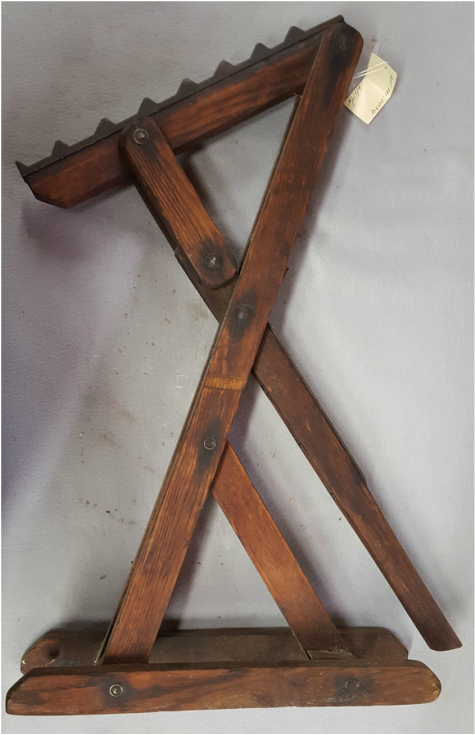
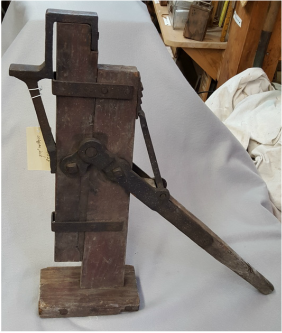
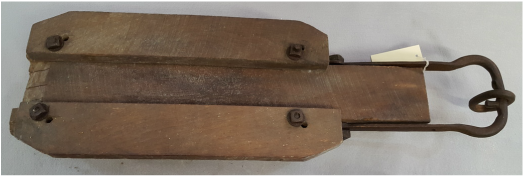

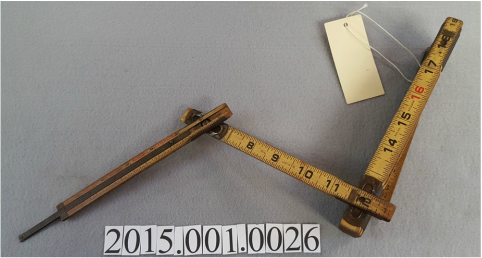

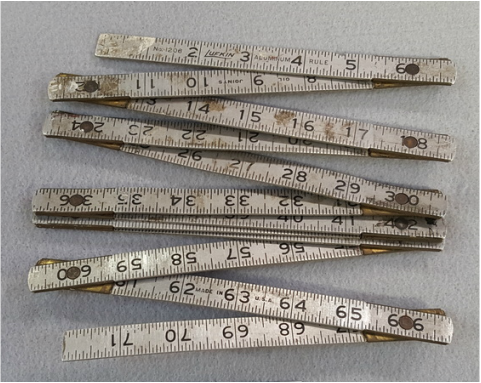

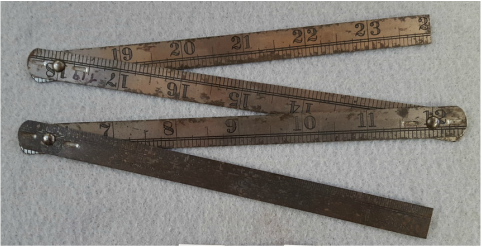
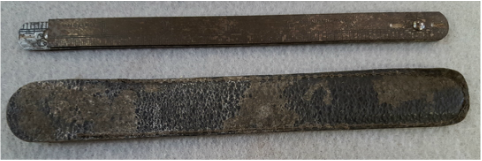




 RSS Feed
RSS Feed
